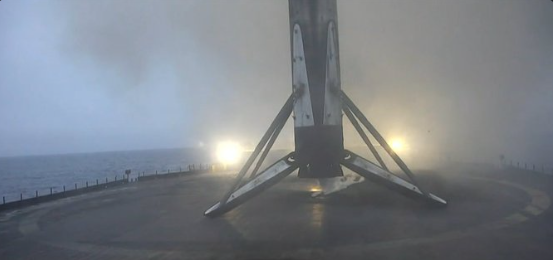Elon Musk is about to offer some serious competition to all cell phone providers. He has hinted at his own smart phones and will surely scare the hell out of all major companies. He doesn’t need them for anything, with his own infrastructure.
SpaceX launched 20 more Starlink satellites on the night of July 11, enhancing its growing network, including 13 with direct-to-cell capabilities. The Falcon 9 rocket lifted off from California’s Vandenberg Space Force Base at 10:35 p.m. EDT (7:35 p.m. local time; 0235 GMT on July 12). This launch was postponed by a day without a specified reason.
Watch Falcon 9 launch 20 @Starlink satellites to orbit from California, including 13 with Direct to Cell capabilities https://t.co/aXuY7ZXXrO
— SpaceX (@SpaceX) July 12, 2024
As planned, the Falcon 9’s first stage successfully landed about eight minutes after launch on the droneship, Of Course I Still Love You, stationed in the Pacific Ocean. This particular booster has now completed 19 launches and landings, nearing the record of 22 flights set by another Falcon 9 last month.
The rocket’s upper stage continued its mission, carrying the 20 satellites into low Earth orbit, with deployment expected about 59 minutes after liftoff. SpaceX has completed 69 Falcon 9 launches in 2024, with 49 of those dedicated to expanding the Starlink network, which now includes over 6,150 operational satellites.
Over 100 of these satellites have direct-to-cell capabilities, a number that is expected to grow, along with the overall size of the Starlink constellation. This initiative aims to provide global high-speed internet, especially in underserved areas, by leveraging a vast network of low-Earth orbit satellites. The new direct-to-cell feature will allow better connectivity for mobile devices, helping to bridge the digital divide.
🚨🇺🇸FALCON 9 LAUNCHES 20 STARLINK SATELLITES, INCLUDING DIRECT TO CELL
On June 4, at 7:16 p.m. ET, SpaceX’s Falcon 9 launched 20 Starlink satellites, with 13 equipped with Direct to Cell capabilities, from Cape Canaveral Space Force Station in Florida.
This mission marked the… pic.twitter.com/t1Gv0kt7e8
— Mario Nawfal (@MarioNawfal) June 5, 2024
The frequent launches highlight SpaceX’s commitment to enhancing its satellite infrastructure and making internet access more widely available. Each successful mission also demonstrates the company’s advancements in reusable rocket technology, which significantly reduces costs and increases the sustainability of space missions.
Expanding the Starlink constellation with satellites that have direct-to-cell capabilities marks a significant technological advancement. This feature allows for more seamless integration with existing mobile networks, improving user experience and service reach.
🚨🇺🇸SPACEX LAUNCHES CELL-CAPABLE STARLINKS, LANDS BOOSTER
SpaceX successfully launched 20 Starlink satellites from California, including 13 with Direct to Cell capabilities.
The Falcon 9 booster, on its 19th mission, landed precisely on the “Of Course I Still Love You”… pic.twitter.com/MG5YtyJQBY
— Mario Nawfal (@MarioNawfal) July 12, 2024
Major Points:
- SpaceX launched 20 new Starlink satellites on July 11, including 13 with direct-to-cell capabilities.
- The Falcon 9 rocket lifted off from Vandenberg Space Force Base in California at 10:35 p.m. EDT after a one-day delay.
- The rocket’s first stage booster successfully landed on the droneship “Of Course I Still Love You” in the Pacific Ocean, marking its 19th launch and landing.
- This mission is part of SpaceX’s efforts to expand the Starlink constellation, which now has over 6,150 operational satellites, with more than 100 equipped with direct-to-cell capabilities.
- SpaceX has conducted 69 Falcon 9 launches in 2024, with 49 dedicated to Starlink, aiming to provide high-speed internet to underserved areas worldwide.
TL Holcomb – Reprinted with permission of Whatfinger News



